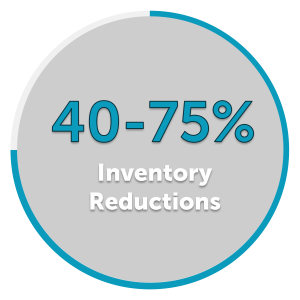
(c) Andreas Klassen via unsplash.com
Lean concepts help to streamline processes by reducing waste (non-value added activities) in an organization. It is the key principle in all the work I do as a Lean Consultant. Here is an overview of what that means.
What is Lean?
Lean concepts are used all over the world today, but they really began during World War II. The United State realized that to win the war they would need to out produce the countries they were fighting. Although not called Lean they created a program and implemented process improvements along with the birth of Rosey the Riveter they increased production, in some cases by 8 times. Lean process improvement aided in the success of the war due to efficient, fast production of war equipment and machines. After the war, Toyota used the program to develop the Toyota Production System or Lean Manufacturing which put them on the map in the 70’s, currently making it the second largest auto maker in the world based on sales.
Overall, a combination of tools and techniques that increase business performance defines lean concepts.
How do Lean concepts help?
Lean works by identifying waste, activities that cost more money and uses more resources required to full fill the needs of the customer(s) and works to eliminate it. This then adds more value and expands capacity. This means companies can better meet customer demands. It creates the ability to make exactly what is needed when it is needed in the quantity that it is needed.
Ideally, it works to build processes with zero waste and provide perfect value to the customer. It reduces lead time to customers, reduces employee frustration caused by work barriers, and encourages continuous improvement with optimal use of resources.
How does waste become part of an organization?
A company has waste if:
- They have product defects or have to redo work
- They experience high employee turnover
- Overproduction that creates excess goods
- Lots of people ‘having their hands’ on the same things
- Low morale as employees deal with work place frustration
- People are constantly searching for things like tools, information, materials and or supplies
Waste often happens when there are:
Process Changes. A process has changed, but there was a lack of communication in how to work with that change. An example of this could be that inventory was rearranged so that the most used items are near the door, but people who access the inventory are used to seeing items in numerical order, so continue to put items where they used to be, not seeing the new pattern.
Work Arounds. We don’t understand how to do something so we create our own way (work arounds). For example, someone in the organization is given a spreadsheet built by someone else. It makes sense to the first person, but not the second, so the second person uses an outdated form they know and understand.
In this example, we can see why one employee (such as a supervisor) could be frustrated that their subordinate isn’t using the spreadsheet correctly. They could interpret that as stupidity, laziness, or some other unfair trait, when the true issue is that the employee had something that worked for them in the past, and they don’t know how to use the new spreadsheet, so they go back to what they know.
Irrelevant Processes. The organization has added steps or task to processes that have become irrelevant, but they didn’t notice. When I hear “because we’ve always done it this way”, that’s my first clue that there is waste. One company I worked with had been in business for decades and was using paper invoicing despite it causing a myriad of problems. By letting go of paper invoicing, they were able to better use the technology they had purchased, streamlining their processes, and eliminating redundancy.
Band-Aid Fixes. The root cause of the problem hasn’t been addressed and band-aid fixes are in place, (also known as a Frankenstein process). One of the most disrespectful thing one person can do to another is waste their time. Allowing employees to continue to work broken or bad processes is a complete waste of time. Solutions must be put in place, instead of fixes to prevent the problem from happening again. We seem to always have the time required to fix the problem every time, yet we cannot find the time to put a solution in place.
If the above scenarios sound like yours or your employee’s frustrations, I’m here to help. Partners in Business Excellence, PBEX, LLC helps by providing a complete review and analysis of your business or department. We look at the numbers and systems in place that create efficiency and profitability, or that set up employees and processes to fail. Then, we offer consulting, lean process improvement training, and the application of Lean concepts to support your organizational goals. Contact us to learn more about lean methodology as it relates to employee management and to schedule your review today.









